https://w2.countingdownto.com/3534816
Product Review – Capski Bottle Opener

As if a Shower Beer Holder wasn’t awesome enough, Capski has now released a Bottle Opener. Using the same material that keeps a can of beer upright in your shower, the Capski Bottle Opener is a solid answer to the age old question, “Where did I put that bottle opener?!”
Listen – I’m not going to list all the places you could install this bottle opener: on your beer fridge, work bench, tool box, etc…but what I will tell you is that it works shockingly well. All you need is a smooth, shiny surface and you will never lose your bottle opener again…or drill holes to attach a conventional wall mounted bottle opener.
Believe me – when I installed the Capski Bottle Opener to my refrigerator and opened my first bottle from it, I half expected the whole thing to fall to the floor. But it performed as advertised – the opener mechanism is sturdy and the silicone grip did not shift, even after a month of bottles being opened on it.
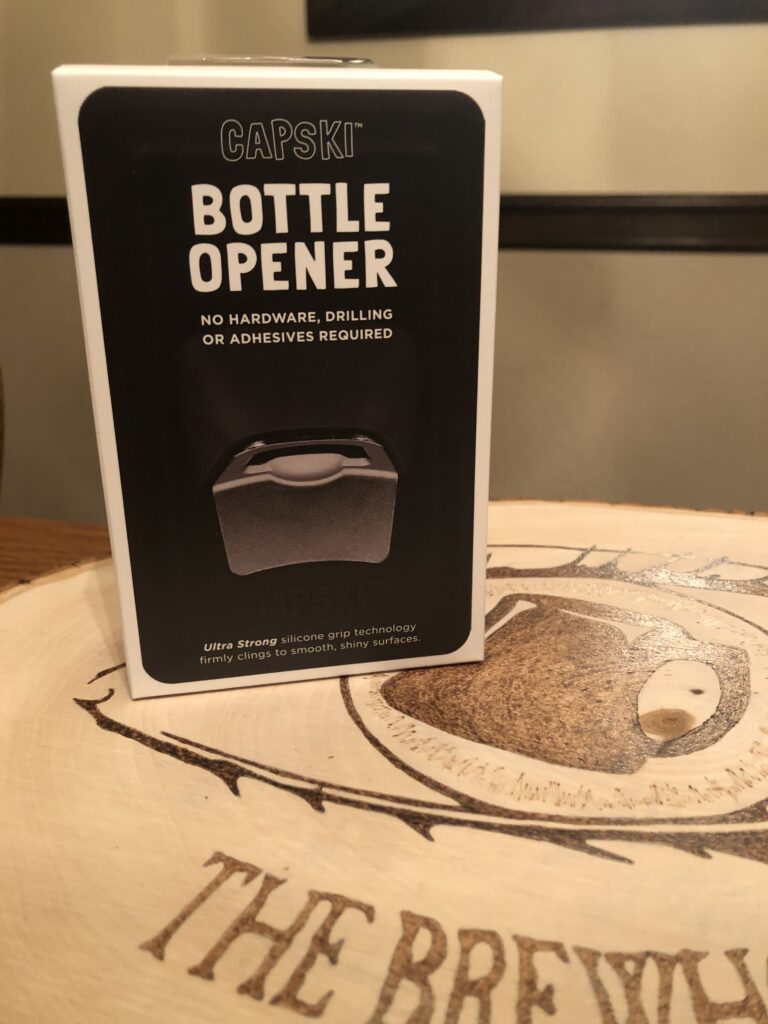
The Capski Bottle Opener is well worth the $16 – available here
Cheers!
The Brewholder
Copyright 2020 – all rights reserved
Book Review – The Beer Diet: How to Drink Beer and Not Gain Weight
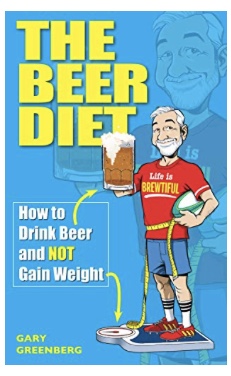
Craft beer fans – how many pounds and inches do you think you’ve added due to your passion for brew? Wouldn’t it be great if you could continue to drink beer and not gain weight? Wow! When I cracked open Gary Greenberg’s “The Beer Diet: How to Drink Beer and Not again Weight” I was very excited to find the answer!
Are the answers all here? Of course not – each beer drinker is an individual with a myriad of unique health conditions; a boilerplate approach would not work for everyone. But the information Greenberg provides is definitely food for thought – exercise, eating habits, mental health, and your approach to the intake of your favorite malt beverage all can work together to decrease its negative health effects.
The Beer Diet is an easy read and encourages us craft beer fanatics to really think about our choices – so that we can hopefully continue to enjoy beer for a long time to come! The Beer Diet is available on Amazon in Kindle format, and paperback will be released soon.
Cheers!
The Brewholder
Copyright 2020 – all rights reserved
Brewers Publications new release – Quality Labs for Small Brewers: Building A Foundation for Great Beer

Brewers Publications, the leading publisher of contemporary and relevant brewing literature for today’s craft brewers, homebrewers, and beer enthusiasts, will be releasing “Quality Labs for Small Brewers: Building A Foundation for Great Beer” on August 3, 2020. Written by Merritt Waldron, author and Quality Director at Baxter Brewing Co. in Lewiston, Maine, this is a how-to guide for establishing a brewery’s quality program. I’m looking forward to digging into it and posting my review in the Brewholder’s Library!
Here is the full press release:
Brewers Publications Presents: Quality Labs for Small Brewers: Building a Foundation for Great Beer
A how-to guide for establishing a brewery’s quality program
Boulder, Colo. • July 14, 2020 — Quality Labs for Small Brewers: Building a Foundation for Great Beer, the latest release from Brewers Publications®, emphasizes the importance of establishing a quality program for every brewery, no matter the size. Merritt Waldron, author and Quality Director at Baxter Brewing Co. in Lewiston, Maine, walks readers through a step-by-step process on how to execute a quality program at any brewery.
As many breweries across the country reopen following restrictions due to the global health pandemic, implementing policies, procedures, and specifications to directly influence the consistent production of safe, quality beer is more relevant than ever.
“Quality beer is essential to the success of any great brewery. This book ensures that only quality beer reaches the consumer, time after time,” said Waldron. “With the programs outlined in this book, breweries at any scale will be able to dive beyond the numbers and help pinpoint any risks or areas of improvement in their beer.”
Quality Labs for Small Brewers: Building a Foundation for Great Beer
Author: Merritt Waldron
ISBN: 9781938469633
EISBN: 9781938469640
Size: 8.5 x 11 inches, 296 pp
Format: Paperback
Cover Price: $95
Publication Date: August 3, 2020
Member Pre-sale July 14 – July 21, 2020: Brewers Association and American Homebrewers Association members receive a 30% discount.
With more than 60 titles to choose from, Brewers Publications is the leading publisher of contemporary and relevant brewing literature for today’s craft brewers, homebrewers, and beer enthusiasts. Brewers Publications supports the mission of the Brewers Association by publishing books of enduring value for amateur and professional brewers, as well as titles that promote understanding and appreciation of American craft beer.
Cheers!
The Brewholder
Copyright 2020 – all rights reserved
Book Review: Historical Brewing Techniques – The Lost Art of Farmhouse Brewing
Historical Brewing Techniques – The Lost Art of Farmhouse Brewing by Lars Marius Garshol is a historical adventure much like Jurassic Park; but rather than amber, history is re-discovered in creamy foam and bowls of unfiltered beer. His adventure began in 2014, when Garshol, a native of Norway, homebrewer, software engineer and blogger, set out to explore the brewing traditions of farms in northern Europe. This was no easy feat considering that farm brewing has all but been pushed to extinction due to many factors, including the rise of industry and the decrease of traditional agriculture, the lingering effects of World War II and the Cold War, and the commercialization of beer.
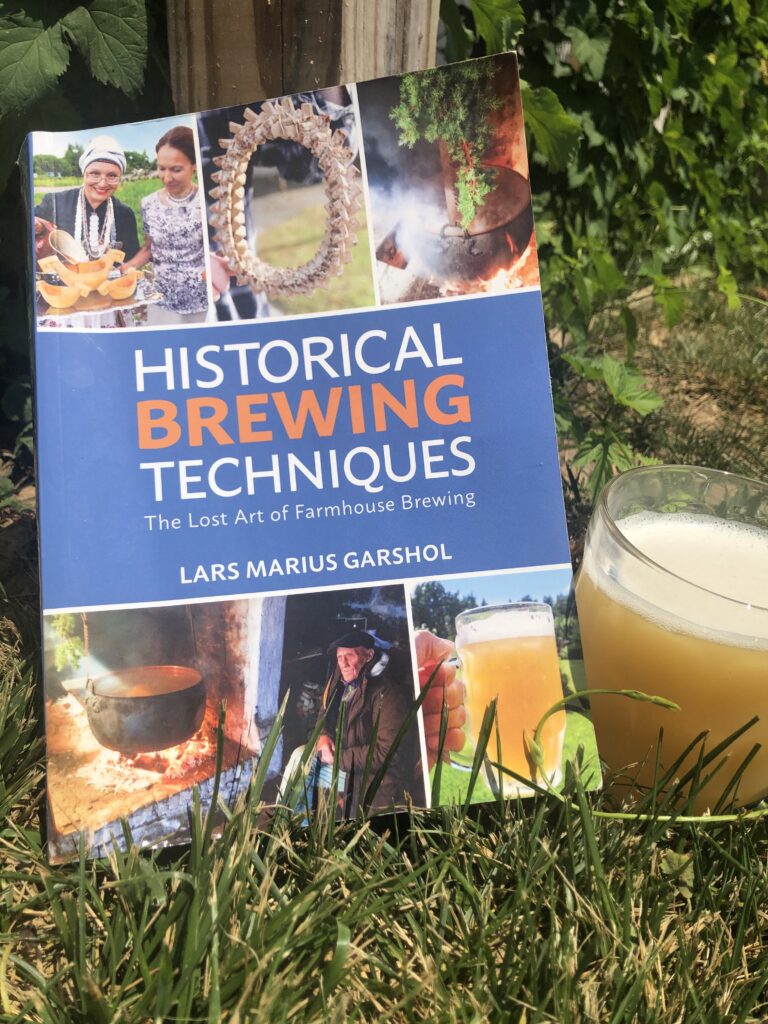
One of his goals was to get to the bottom of the mysterious strain of yeast that the commercial brewing industry is fascinated with – kveik. To understand kveik and other historical farmhouse brewing methods, Garshol visited those who are still brewing the old-fashioned way – the descendants of farm brewers. Tucked away in the farthest reaches of Norway, Estonia, Latvia, Lithuania, and Russia, Garshol sought out and brewed with farm brewers who more often than not did not have a written recipe, they simply cut nearby juniper branches for infusions and relied on the feel of the liquid for pitching the yeast – when it is “the temperature of warm milk.”
During his brew sessions, Garshol attempted to apply science to these methods and logged data when possible (including temperatures, weight of ingredients, and original/final gravities). He provides written recipes for them in Chapter Nine, but warns, “When brewing farmhouse ale, a good tip is to take a deep breath, lower your shoulders, and relax a bit. Try to forget all the things you think you know and instead let the tradition guide you. Feel free to take the numbers seriously, but allow yourself some latitude.”
Historical Brewing Techniques is a fantastic read for those who are interested in learning from the brewing past. Garshol’s hands-on research into traditional farmhouse brewing is truly a major anthropological project, and his efforts to publicize these techniques is significant from a historical standpoint. Garshol’s documentation of the science and history of farmhouse brewing is excellent, but luckily it does not read like a textbook because it is filled with his personal experiences – many humorous – with the brewers and their unique perspectives on brewing, and frankly, their lack of concern for meeting style guidelines.
Historical Brewing Techniques is published by Brewers Publications, a Division of the Brewers Association, and can be purchased on the Brewers Association website for $24.95.
Cheers!
The Brewholder
Copyright 2020 – all rights reserved
Book Review: Growing Your Own Cocktails, Mocktails, Teas & Infusions
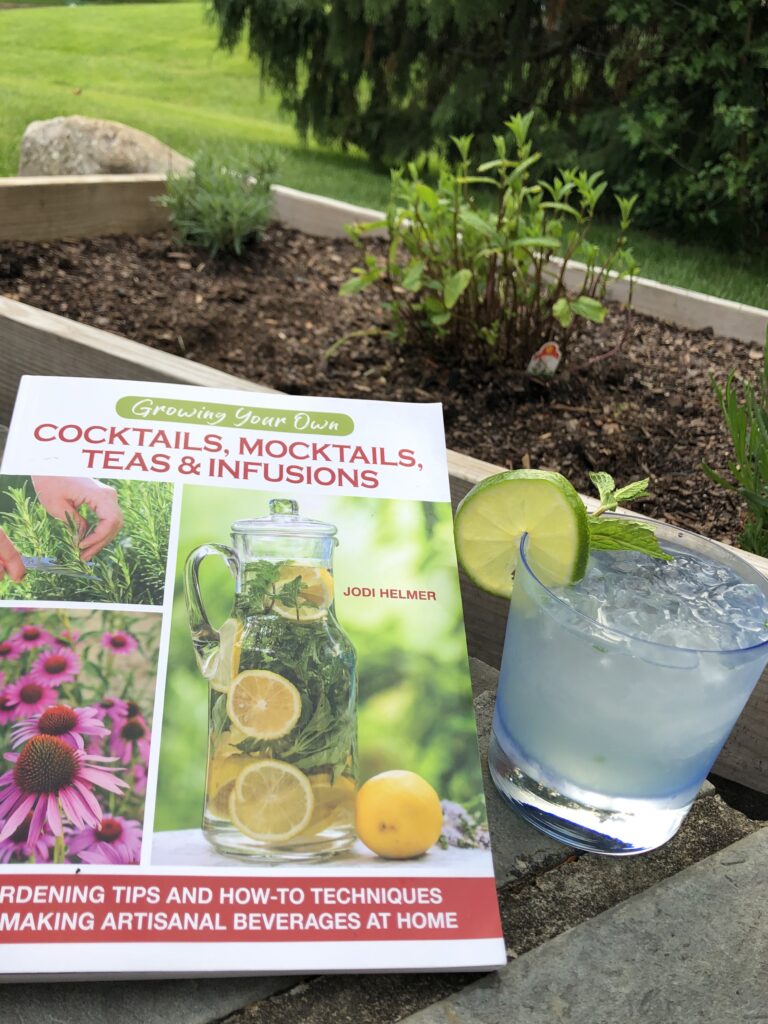
Now that Mother’s Day has come and gone, the gardening season is in full swing. If you have a traditional kitchen garden like me, you are waiting with anticipation…wondering if your tomatoes, cucumbers, peppers and a handful of herbs will be successful enough to make a salad and some garnish later this Summer. But other than salad, what else could you grow to make your days tastier? Jodi Helmer’s “Growing Your Own Cocktails, Mocktails, Teas & Infusions” answers just that question.
While not an expansive reference book, the five chapters of “Growing Your Own” provide a solid foundation for the development of a beverage that you can grow from scratch. Helmer opens with a “brief history of your favorite drinks” and then launches into a lengthy chapter on plants that can help make a cocktail special, describing “leaves”, “flowers”, “fruits and vegetables”, and “roots.” What is especially helpful is that Helmer provides the suggested growing zone for each variety (and the growing zone map for North America) so that you don’t accidentally choose a tropical plant that couldn’t survive your garden in Pennsylvania!
Helmer continues by providing tips for every aspect of bringing your garden into your glass (and your mouth!). From garden planning to harvesting to proper glassware, everything you need to make your first artisanal beverage can be found in these chapters – including recipes for simple syrups enhanced with herbs, cocktails, and non-alcoholic drinks.
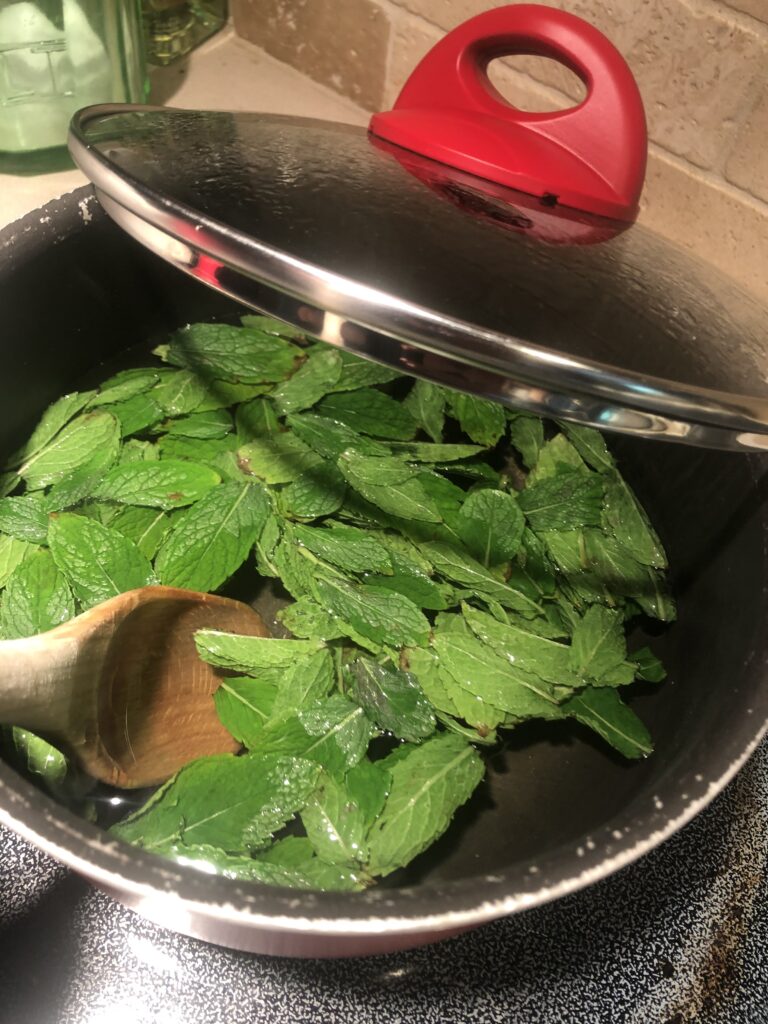
To put Helmer to the test, I harvested fresh spearmint from my garden and made a simple mint syrup, following the instructions on page 125. With the mint syrup in hand, I gathered the ingredients for the Mojito recipe on page 133. It was a delicious, summer cocktail, to celebrate Memorial Day Weekend and the informal beginning of summer. I would definitely consider this “experiment” a success; the libation was tasty, especially because I knew that the mint had been growing outside my back door only a short time ago.
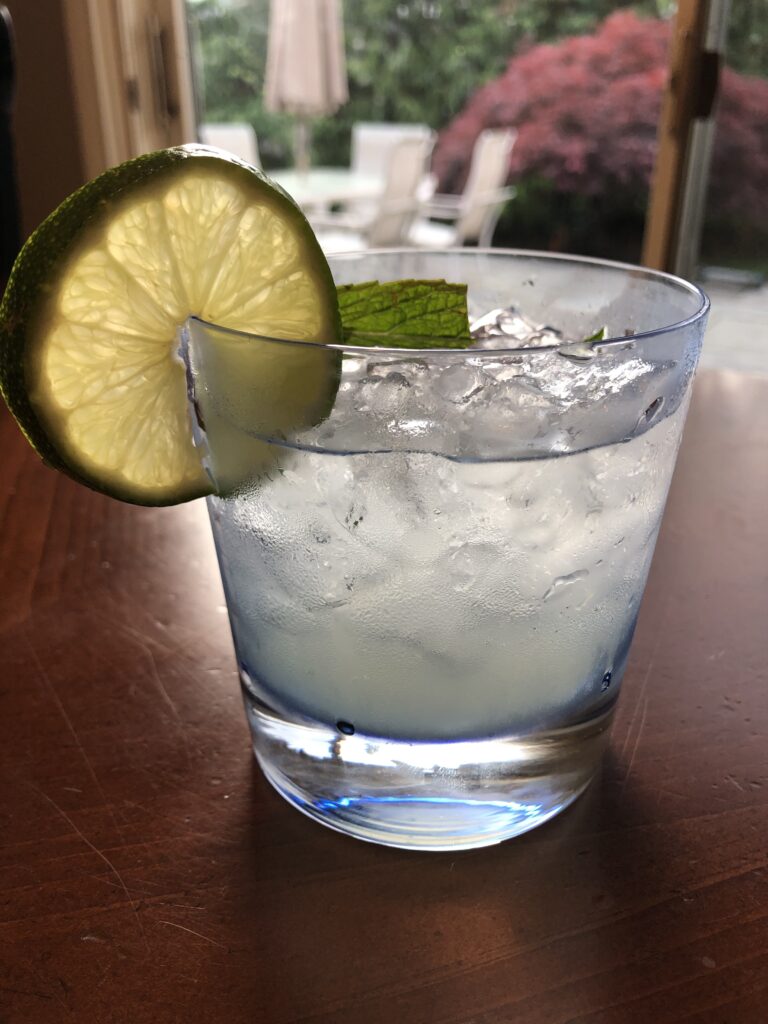
Overall, “Growing Your Own Cocktails, Mocktails, Teas & Infusions” is a solid introductory book for home gardeners and bartenders alike. With the word “Cocktails” in the forefront of the title, I expected to see more recipes, but as I noted above, the recipe for the Mojito was excellent, so I’ll take quality over quantity in this case. And one note – the chapter on cocktails was written by Jeanette Hurt, author of “Drink Like A Woman,” so check that book out if it is more recipes you need! In addition to Helmer’s gardening expertise, the photography in the book is bright and enticing; it motivates the reader to plant that garden and get ready to enjoy a homegrown cocktail some evening later this summer!
“Growing Your Own Cocktails, Mocktails, Teas & Infusions“ was published in April 2020 by Fox Chapel Publishing. It is available on Amazon and retails for $18.99.
Cheers!
The Brewholder
Copyright 2020 – all rights reserved
A Vacation at Home with the Shower Beer Holder
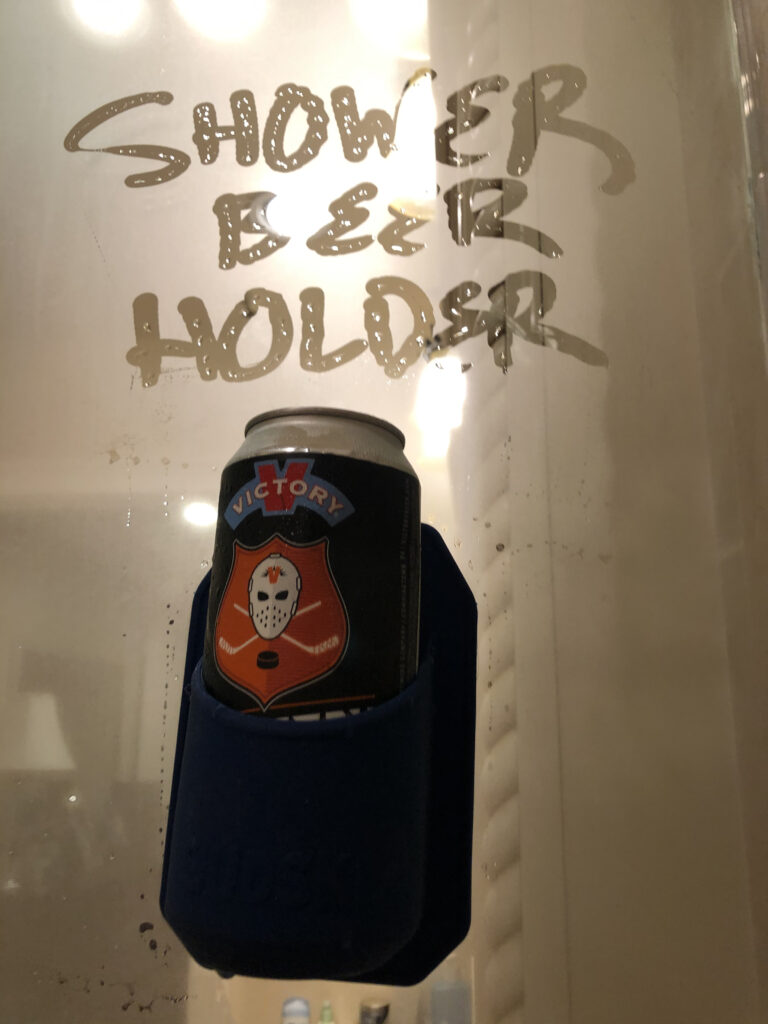
For many people, an important tradition for Memorial Day Weekend and summer vacation is having a beer in an outdoor shower. Whether coming back to a beach house after a day in the sun and sand, or returning to a cabin after boating on a crystal lake, a crisp, cold beer in an outdoor shower is one of the most relaxing events of your time off. So what if you could have that feeling all year round, from the privacy of your indoor shower at home?
Recently I was asked to review the Sudski Shower Beer Holder by 30Watt. Does it seem simple? Yes. Is it something that you must have? No. But in this time of quarantine and questionable vacation plans, is it a nice reminder of better times (in the past and to come)? Undoubtably YES.
The Shower Beer Holder is made of “space age” materials and sticks to shiny surfaces. Luckily I have a glass door and wall, so my Shower Beer Holder stuck just fine there. It can hold both 12 oz and 16 oz cans (in case you want to enjoy a hazy NE IPA pounder in the shower). I chose a 16 oz. Hip Czech Lager by Victory Brewing Company for my test, and it held up perfectly!
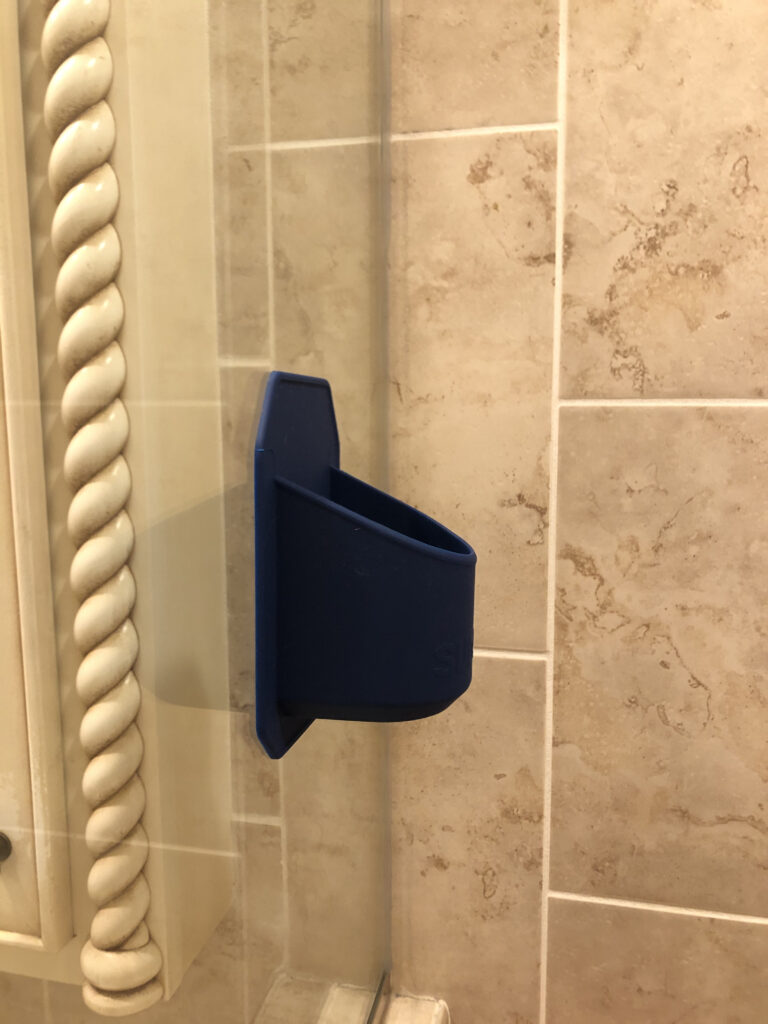
One note – you need to install the Shower Beer Holder 24 hours before you use it, and make sure you remove any air bubbles…or else your beer will fall and pour down the drain. Once you’ve taken care of those 2 steps, all you need is hot water, maybe some good tunes, and the vision of your favorite outdoor shower – and it’s a vacation at home!

The Shower Beer Holder is available online at various locations – on Amazon it sells for $24.47. I thoroughly enjoyed testing this product and am considering purchasing the companion product, the Shower Wine Holder soon!
Cheers!
The Brewholder
Copyright 2020 – all rights reserved
Book Review – “How To Drink”: A Lesson For the Ages

“How To Drink – A Classical Guide to the Art of Imbibing” is a modern translation of a social commentary written by Vincent Obsopoeus in 1536. Alarmed by the rise of binge drinking, peer pressure and competitive drinking in sixteenth-century Germany, Obsopoeus (pronounced “Jobs? So pay us!”) argues that “moderation, not abstinence is the key to lasting sobriety, and that drinking can be a virtue if it is done with rules and limits” in a text inspired by the Roman poet Ovid’s “Art of Love.”
This version of “How to Drink” was translated and edited by Cornell University Professor of Classics Michael Fontaine. In the book’s introduction, Fontaine defines the meaning of critical words found in the book (“Bacchus,” “Flanerian,” and the names of drinking vessels used in 1536), and also provides context around who Obsopoeus was and the wine soaked world in which he lived.
Based on the foregoing description, you might assume that “How to Drink” is a judgy, academic text best placed on the reference shelf for another time. But make no mistake – when you read Fontaine’s translation you will realize that when it comes to drinking, there is a striking similarity between America’s “drinking bro culture” and the society described by Obsopoeus almost 500 years ago. For example, I was surprised and amused by Obsopoeus’s inflammatory descriptions of people you shouldn’t drink with – Buzzkills, Belligerents, Blowhards, Gossips, to name a few – and realized his words are just as applicable today as they were in sixteenth-century Germany.
I found this book fascinating because Obsopoeus discusses social situations that he observed (and participated) in the 1500s – but his descriptions could be that of parties I’ve attended in the past 20 years! I also enjoyed reading How to Drink because it stands for a simple concept proposed by the Craft Beer industry in their battle against macrobrew: beer should be enjoyed by all and in moderation (with occasional slip-ups forgiven) – not “pounded”, “shotgunned,” or “funneled” in excess to prove masculinity.
While I throughly enjoyed “How to Drink,” don’t worry if you don’t – Obsopoeus anticipated that some may disagree with his thoughts and provided his critics with this message: “May the Bacchus (wine) you drink with that stupid, obscene mouth of yours prove joyless and unfun, you bastard!” Man, I would’ve loved to chat with Obsopoeus over a few beers!
I recommend “How to Drink” for anyone who enjoys history, the social aspects of alcohol, and the fact that some things never seem to change through the ages! “How to Drink” will be available from Princeton University Press on April 14, 2020 for $16.95 – order your copy here.
Cheers!
The Brewholder
Copyright 2020 – all rights reserved
A Sad Day in Pennsylvania – Stoudts Brewing To Cease Production
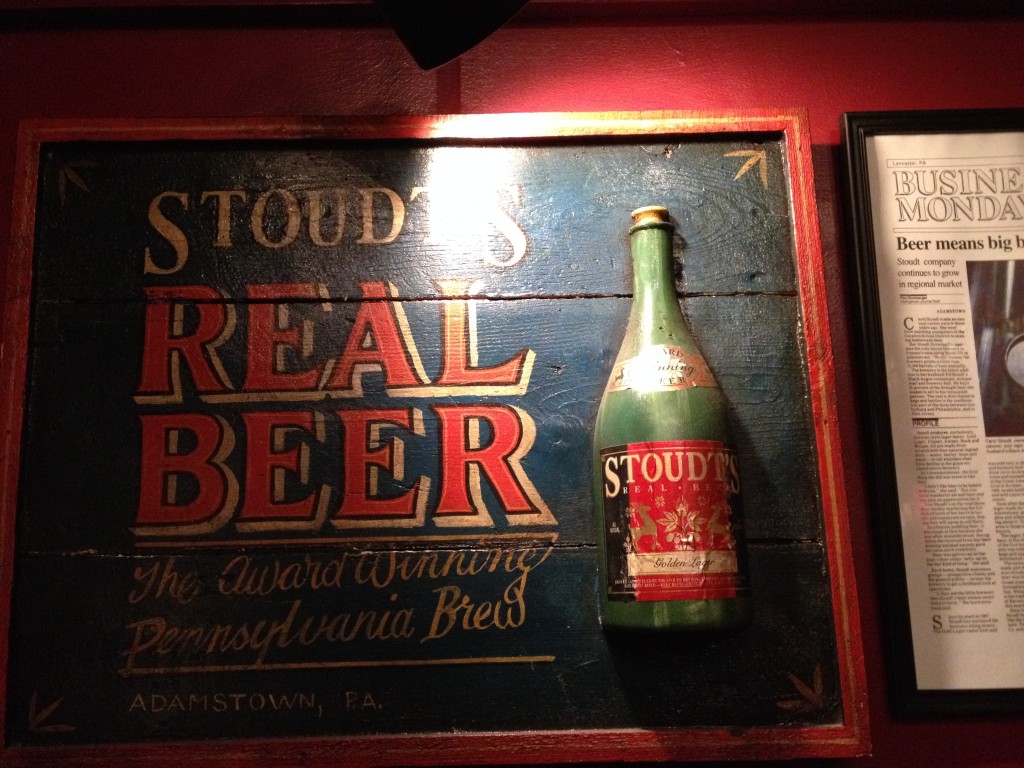
It was a sad announcement that was just released – one of the pillars of Pennsylvania’s craft beer community is ceasing operations. Read the press release here.
The press release explains that Carol Stoudt, the first female brewmaster since Prohibition, is retiring after years of helping the Pennsylvania craft beer industry to grow into what it is today. While Carol is stepping away, it seems she might be interested in the right opportunity to continue the Stoudt’s legacy however, as she explained in the press release, “This was a difficult decision to make,” says Carol, “but we’re not moving enough volume to justify the expense of keeping the brewery open. However, we’re not closing the doors to any business opportunities that could help the Stoudts brand live on.”
I personally have many great memories of Stoudts – attending a beer festival there in 2003, annual dinners (and flights) at the Black Angus in December after finding the “perfect” Christmas tree in Lititz, and meeting Carol during the CBC in Philadelphia 2015 while enjoying an imported Pilsner Urquell. Of course, I will truly miss her perfect German style beers like Stoudts “Munich Gold” and Stoudts “Oktoberfest,” as well as her specialty brews made for McGillin’s Olde Ale House in Philadelphia – McGillin’s Genuine Lager, McGillin’s Real Ale, and 1860 IPA.

Thank you Carol, and thank you Stoudts, for years of making traditional German beer accessible here in the Philadelphia area. You will truly be missed.
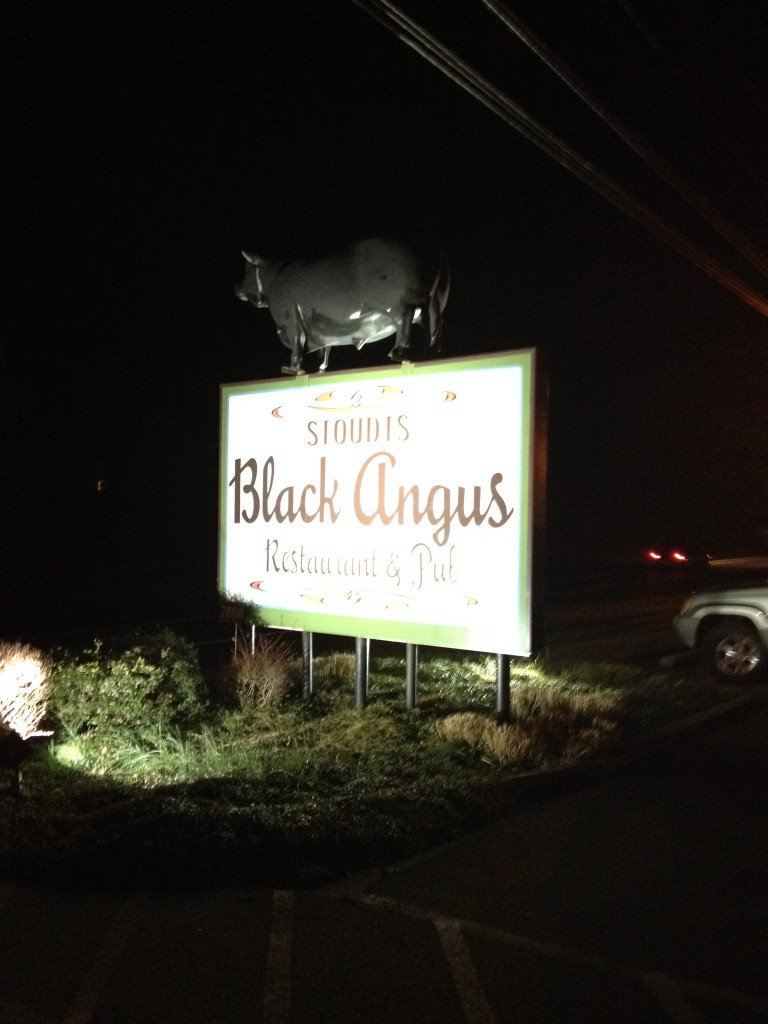
Cheers.
The Brewholder
Copyright 2020 – all rights reserved
Big Game Choices – Forget Andy Reid

As most of my readers know, I am located in the Philadelphia area and love my Philly beer scene. I also love my Iggles. So what am I supposed to do as an Eagles fan during Super Bowl 54 – who should we root for? First of all, let’s all remember that the Eagles are not playing today – so as an Eagles fan, I don’t really care who wins, as long as there is a good, Philly craft beer in my hand while I watch the last football game of the season.
But let’s get into it: Since the Eagles lost to the Seahawks a few weeks ago, there has been a lot of talk by Eagles fans about supporting the Chiefs for “good ole Andy Reid; he deserves a Super Bowl win, right?” NO. (Take a sip of a Yards Loyal Lager, here)
Listen – I’m generally a nice guy, but my problem is that if Andy Reid wins a Super Bowl today, that means that he wasn’t “burned out,” “cooked”, or “not a HOF coach” – which was the narrative when the Eagles let him go. A Chiefs win today would mean that once again, the small minded national media can point to Philadelphia and continue their cheap storyline: “see – they don’t know what they are doing; they are idiots, Neanderthals, they are terrible people,” yadda yadda yadda. (Take a sip of a McAllister Skook Water here).
With all that being said, I’m still rooting for the Chiefs today. Not because I want Andy to win, but for the following breakdown:
- If not for Andy leaving, both Doug Peterson and Nick Foles would not have come to Philly…and our Super Bowl VII either.
- LeShaun McCoy would get a ring. I still hate how the “coach whose name shall not be spoken” let him go and he deserves a championship for what he gave us during his years in Philly.
- How can you not enjoy watching Travis Kelce?
- The Chiefs haven’t been in the Super Bowl for 50 years…and the 49ers have 5 rings. I still appreciate the underdog story.
- Patrick Mahomes is pretty freakin amazing.
- “Jimmy G” was a Patriot, backing up Philly Enemy #2. (#1 is the master of cheating, Belichek). Nuff said.
(Tilt back a Conshohocken Blood money IPA here).
So there it is. That’s how one fan is looking at it, and wondering what my next Philly beer will be. And wondering how much of a debacle the halftime show will be! Go birds!
Cheers!
The Brewholder
Copyright 2020 – all rights reserved
